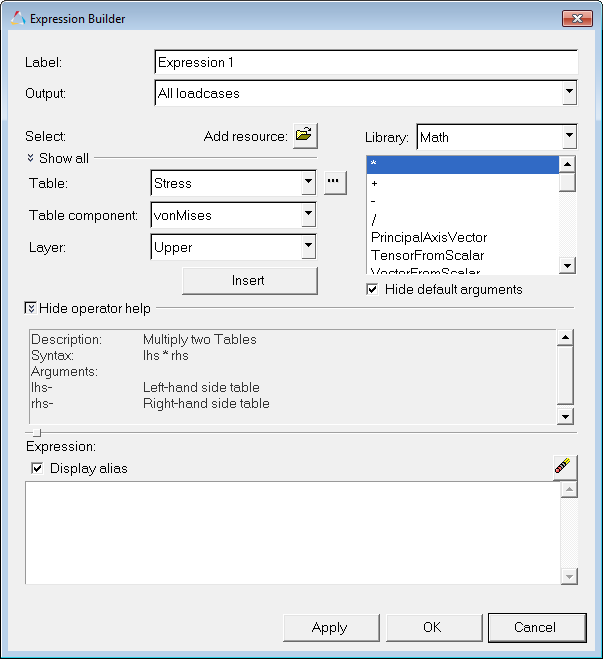Table Selection
Once an operator is selected, tables must be selected to form the input.

Figure 1. Expression Builder with the table selection section expanded to Show all
Once a table address is specified, it can be added to the expression (at the current insertion point that corresponds to the argument being defined) by clicking Insert. This will add a table address; however, it will be a short-hand form that allows long expressions to be authored without having to deal with long data type names.
LCnFn.{S|V|T}n.Cn.LnWhere:
n =
Index (load case index, frame index, table index, component index, and so
on)
LC = Load case
F = Frame (simulation
step)
{S|V|T} = Scalar, Vector, Tensor
C =
Component (valid only for vector or tensor tables).
L = Layer
index
| Table | Address | Reference |
|---|---|---|
| T1.C1 | 1st tensor, 1st component | Stress, XX (scalar, two layers: Z1 & Z2) |
| T2. | 2nd tensor | Strain (tensor, two layers: Z1 & Z2). |
| T2.C3.L1 | 2nd tensor, 3rd component, 1st layer | Strain, ZZ, Z1 (scalar, no layers) |
| V2 | 2nd vector | Rotation (vector) |
Table references can be made to resources only, and not to tables that are user-defined as a result of an expression. For example, if you define a new tensor, it cannot be addressed in an expression.

Figure 2.

Figure 3.